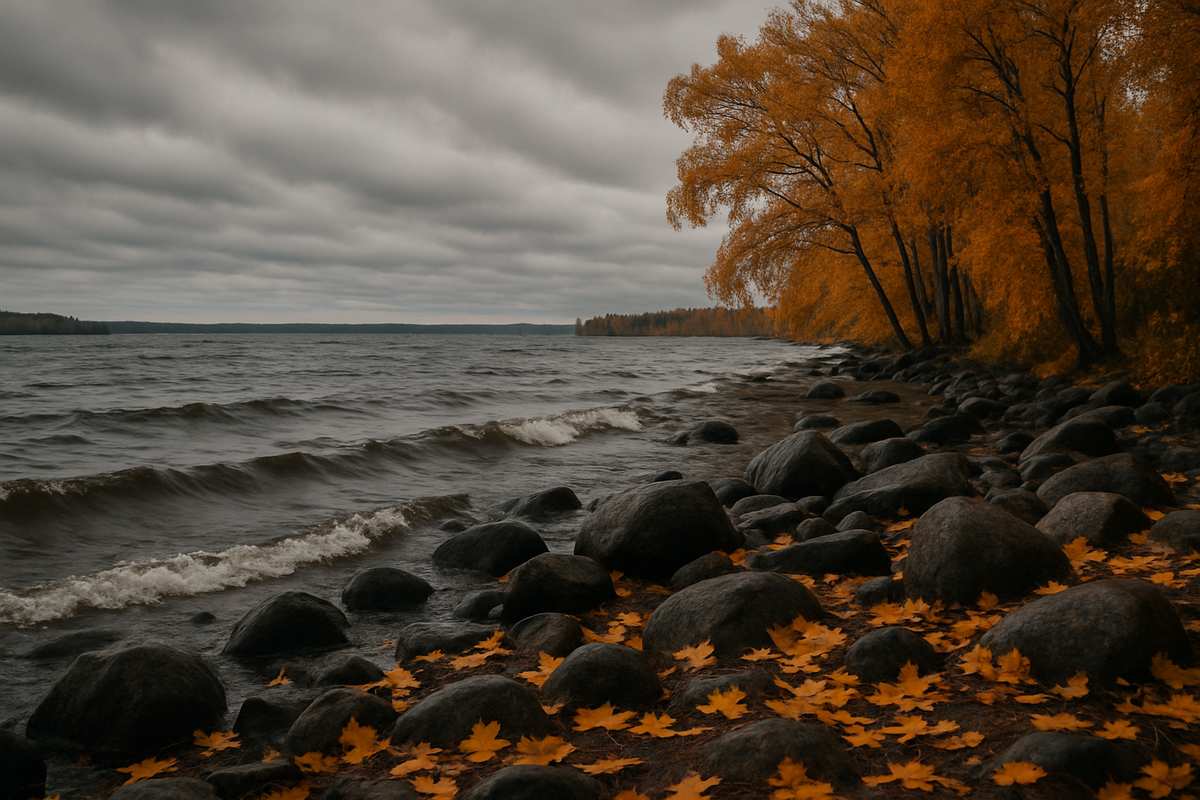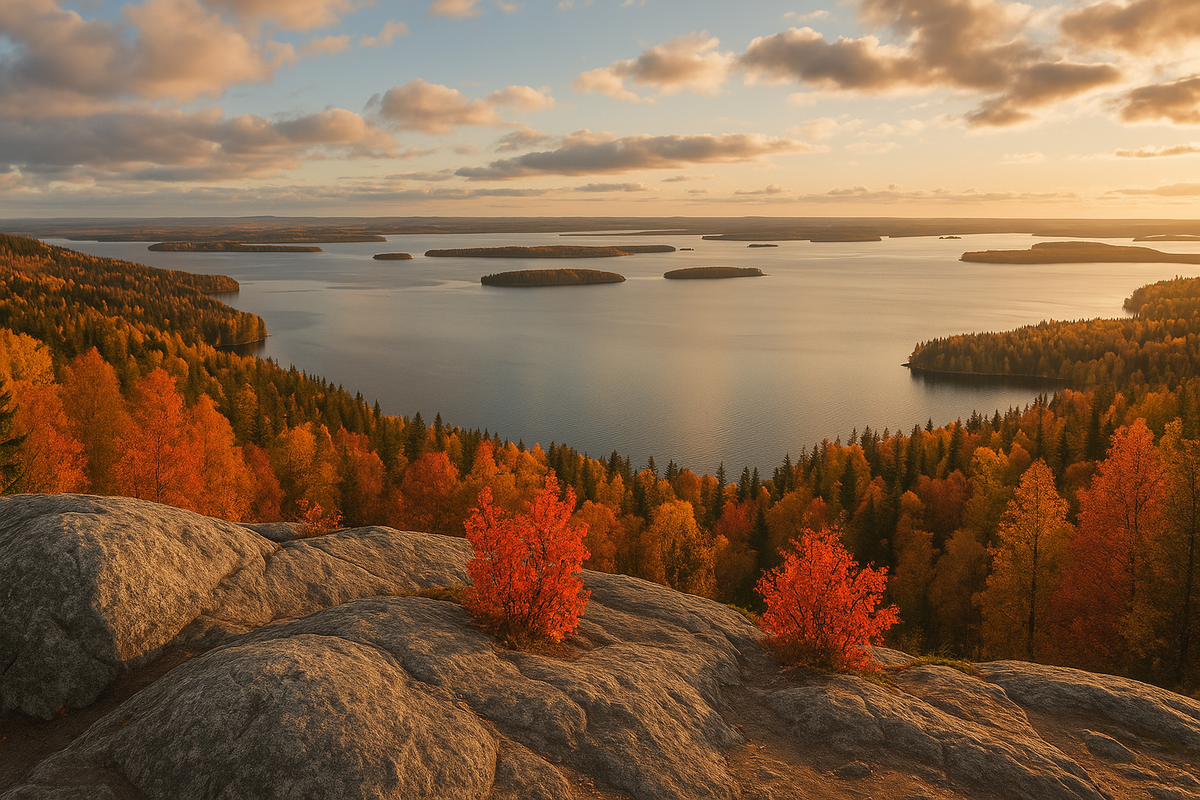🍁 Ruska and autumn: a colour calendar from Lapland to Helsinki
Autumn in Finland is short, intense and absolutely bursting with photo opportunities! Speed is so important here! In the north, the colours really pop and "fade" 1–2 weeks earlier than in the south, which is amazing. And strong winds can "remove" the foliage in just a day, creating stunning natural spectacles. In this article, we'll explore the best times to visit different regions to catch the stunning Ruska peaks, how the temperature, precipitation, and light change throughout the day, where to go with your camera to capture the perfect shots, and what to wear to stay comfortable in the rain and gusts on the plateau.
Ruska calendar: north earlier, south later

Autumn weather: temperature, precipitation, wind

Routes and locations: where to go for colour
— Koli (Karelia). Panoramic views of lakes and islands, classic postcard scenery. Take photos at sunrise/sunset, and walk around the boardwalks during the day.
— Oulanka & Ruka (Kuusamo). Canyons and suspension bridges, powerful water after rain. The roots are slippery — wear trekking shoes and use walking sticks.
— Nuuksio (Helsinki region). Short loops around forest lakes; if it's windy at sea, it's quiet here. Good for families and quick photo shoots.
— Levi/Ylläs (Lapland). Red slopes of fells and dwarf birches. It is colder and windier on the plateau — a layer of membrane will save your shots and your mood.
— Åland/Turku archipelago. Bright rowan trees and shores, soft light in calm weather. Choose sheltered straits and bays for cycling trips.

Photo tips and equipment
You'll need a waterproof jacket and trousers, a mid-layer like a fleece or jumper, a windproof hat and gloves, and sturdy trekking boots. Roots and stones are slippery on the trails in the rain, so walking poles are really useful. For photography, you'll need a microfibre lens cloth, a Ziploc bag and thin gloves to wear under your mittens. The best colours tend to show up 2-3 days after a dry spell, and you'll get the best contrast on a calm day by the water. If you're travelling with kids, it's a good idea to bring a thermos, raincoats and spare socks.
Logistics and prices: autumn is the "golden mean"
September is a great time to visit cities and lakes, as there are fewer people and lower prices. However, in Lapland, demand is higher during the peak ruska season, so it's best to book accommodation in advance. In the Baltic Sea, storm windows are more common in autumn, so it's best to leave a spare day for ferries/cruises. Daytime travel is more comfortable: it's lighter and warmer. After strong winds, it's a good idea to check the status of suspension bridges and deck sections — autumn repairs and temporary closures are not uncommon.
Safety as a unit
The wind on the plateau cools down fast, so you'll need a membrane and a hat. When you're out on the trails after it's rained, try to keep your pace shorter than your stride and use poles. If it's windy, maybe wait a bit before SUP/kayaking; most beginners feel comfortable at around 5 m/s in sheltered straits. The first frosts in Lapland can happen in October, so make sure you plan your daily trips and allow extra time. You'll still need SPF and sunglasses even in autumn, as the low sun and glare on the water can get tiring.
We can't wait to read your thoughts in the comments! If you have any interesting photos, personal experiences or questions about the topic of the article, we would love to hear from you – just leave a comment! We absolutely love hearing from our readers and can't wait to share your comments with you!
FAQ — frequently asked questions
Usually 1–2 weeks in mid-late September. Strong wind/rain can shorten the show — keep 1–2 spare days.
On the lakes — in the mornings after clear, cool nights. These are the ideal hours for mirror reflections and soft light.
Typically, 50–80 mm/month in September–October in most regions. Showers are short-lived, but roots and rocks become slippery.
Above 8–10 m/s on open ridges, it is cold and uncomfortable; choose forest loops and shift your routes lower down the terrain.
A membrane jacket/trousers, fleece, hat and gloves, trekking boots, poles, backpack cover, microfibre lens cloth, spare socks.
Helsinki + Nuuksio/Sipoonkorpi (short loops by the lakes); Tampere + Pyynikki; Joensuu + Koli at dawn.
In the Baltic region, storms can delay ferries; in forested areas, localised trail closures are possible after strong winds. Purchase flexible tickets and allow for extra time.
Fewer than in summer. After rain and near marshy shores, they may "raise their heads," but the wind quickly calms them down.





0 comments
Log in to leave a comment